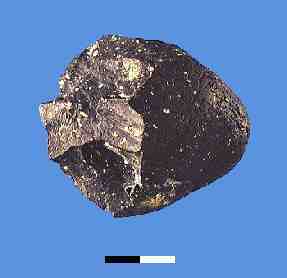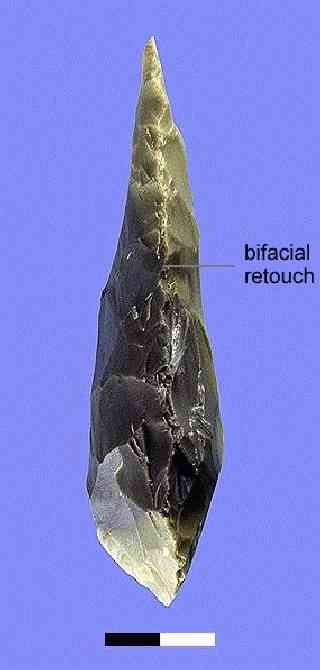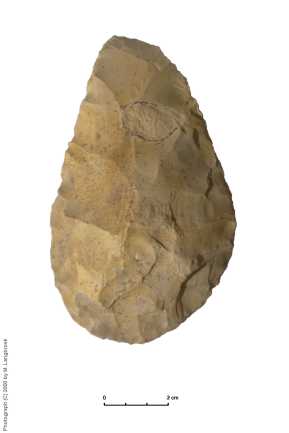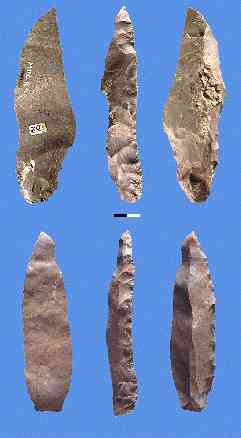
The earliest stone tools known are about 2.6 million years old and consist of simple but efficient flakes of stone, and flaked stones like "choppers" and cores. They have been found at African sites such as Gona Hadar in Ethiopia, Koobi Fora and Omo (e.g. Lokalalei), and Olduvai Gorge, to name a few well known East African research areas yielding many of the earliest sites. They are usually called "Oldowan" tools (after Olduvai), while the earliest ones are sometimes also called "Omo".
An Oldowan chopper 
An Oldowan cleaver 
A larger variety of more advanced-looking Oldowan tools
Acheulean bifacial tools appear later. The earliest radiometrically well dated Acheulean is that of Konso-Gardula (Ethiopia) dated to 1.4 million years ago. Yet, some sites with some margins in their dating, most notably the Early Acheulean sites like EF-HR at Olduvai Gorge, might be even older (dates up to 1.7 million years are suggested). Some palaeoanthropologists link the emergence of the Acheulean to that of Homo ergaster (or H. erectus s.l.) at a similar age in Africa, but I suggest we should be cautious about equating tool technologies with particular hominine species.
An elegant Acheulian biface. 
An Acheulian flint knife from Boxgrove, England; about 500,000 years old.

At this early age (~1.4-1.5 million years ago), Acheulean is found in the East African Rift valley and Southern Africa, while in addition it should be noted that the Israelian site of `Ubeidiya in the Jordan valley also broadly dates to this time (the date is still slightly floating but at least 1 million and probably 1.4 million; the fauna of ÔUbeidiya bears a large resemblance to that of Olduvai Gorge upper Bed II). This pretty well encompasses the whole geographic area occupied by early hominines at that time, although a slightly larger part of West Asia than the Levant might have been occupied from ~2 million years ago (e.g. Riwat, Pakistan). It broadly equates to the area featuring a combination of arid, relatively open savanna with gallery forests along drainage lines. In that area, Acheulean co-occurs with "Developed Oldowan". Developed Oldowan assemblages mainly consist of relatively simple tools like that of the earlier "Oldowan", but with generally a higher percentage of spheroids, and in addition low numbers of bifacial tools. These appear to be different from the bifacial tools of the African early Acheulean in manufacturing technique and 'life history':
Humans used them to kill animals, break bones, slice meat, scrape hides, cut branches and sharpen wood sticks. Access to rich sources of fat and protein hidden in bone marrow, brain and muscles of dead or fresh-killed animals was very important for men's further evolution, because it provided them with enough energy to sustain a larger brain, as well to run for a long time after edible prey. Hominids and early humans lived probably on a mixed diet obtained by foraging, scavenging and hunting. These three activities are progressively more effective in terms of caloric return of investment of time and effort, and the "discovery" of tools for scavenging for the brain and bone marrow and for killing prey was the major amplifying factor that "exploded" human evolution within a few hundred thousand years.
| Mousterian scrapers, from the much later period of the Neanderthals (300,000 B.C till just recently). This shows the growing use of flake tools, a first wave of 'minaturization'. |  |